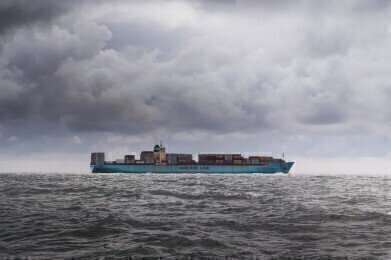Air Clean Up
Can Nanostructured Filters Reduce Shipping Pollution?
Jun 11 2016
A start-up company from the École polytechnique fédérale de Lausanne (EPFL) may just have found an ingenious way to combat the huge amounts of pollution emitted by cargo ships around the world.
Currently one of the biggest contributors to pollution in the world, cargo freighters will be subjected to more stringent regulations regarding their sulphur emissions as of 2020. In response, researcher Mario Michan has founded Daphne Technology, a start-up which uses nanostructured filters to drastically reduce the amount of sulphur and nitrogen oxides (NOx) which such vessels emit.
An Enormous Problem, a Nanostructured Solution
When it comes to improving air quality and reducing transport-related pollution, we normally think of the honking car horns and polluting exhaust pipes of inner city traffic at rush hour. However, it might surprise you to know that merchant ships emit 204 times more sulphur than all of the cars in the world combined.
Furthermore, they also emit astronomical levels of NOx, another deadly toxin which is contributing to the estimated 3.2 million people killed by air pollution each year. After years working aboard a merchant ship while completing a Master’s degree in Microtechnology, Michan came up with the idea to nanostructure filters for the vessel’s smoke stacks.
Using technology similar to that which helps create solar panels, Michan nanostructures titanium to maximise its surface area and then adds several different substances to the metal plate frame in very thin layers. These plates are then spaced evenly apart from each other and placed upright, forming chambers through which the emitted gases can travel. The nanostructured nature of the filter allows it to prove very effective in capturing the gases, while the whole thing is designed to be recyclable. What’s more, the trapped contaminants can even be reused in the production of fertiliser or similar products.
Unbeatable Results
Though the technology has only been tested in a laboratory setting, the early indications are very promising. The new standards set to be introduced in 2020 only address sulphur emissions and require a drop of 14% for ships to be compliant; Michan far surpassed these expectations with his Daphne Technology design.
The laboratory filters were capable of reducing sulphur emissions to just 1% of the normal level and NOx to 14% of the previous amount. As such, they represent a fantastic alternative to other existing suggestions on how to tackle the problem.
“Marine diesel fuel is cleaner but much more expensive and would drive up fuel costs by 50%, according to ship owners,” explained Michan. “And the other technologies that have been proposed cannot be used on boats or they would only cut down on sulphur emissions, without addressing the problem of nitrogen oxides.”
At present, the nanostructured technology is also relatively expensive and Michan’s next challenge will be to find ways to drive down manufacturing costs, whilst also producing the filters on an industrial scale. Up to now, he has only created small-scale prototypes.
However, with a patent expected to be filed later this year, Michan might just have struck upon the solution to maritime pollution – especially if his claims that the filters can reduce current cargo ship pollution levels by as much as 50 times are correct.
For an update on nanostructured filters, check out 'Have Nanostructured Filters Been Developed Further?'.
Events
May 05 2024 Seville, Spain
May 13 2024 Munich, Germany
May 23 2024 Beijing, China
May 23 2024 Beijing, China
Jun 10 2024 Algiers, Algeria














